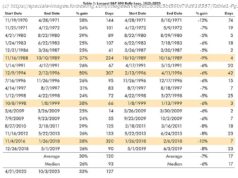Microsoft exceeded its self-imposed goal of a $20 billion annualized revenue run rate for commercial cloud, which includes Azure and Office 365.
Microsoft stock was up more than 4 percent on Thursday after the company reported better-than-expected earnings for the first quarter of its 2018 fiscal year, which ended on September 30.
Perhaps the company’s biggest achievement in this quarter is exceeding its self-imposed goal of a $20 billion in annualized revenue run rate for its commercial cloud business — which includes the Azure cloud, the Office 365 subscription-based application suite and Dynamics 365 apps for customer relationship management and enterprise resource planning. The company came up with a $20.4 billion commercial cloud run rate for the quarter, according to the company’s earnings statement .
KeyBanc analysts Brent Bracelin, Clarke Jeffries and Alyssa Johnson noted earlier this week that they were expecting the milestone either this quarter or the next one. The annualized run rate figure is calculated by multiplying revenue for the last month of the quarter by 12.
“Reaching $20 billion would imply the commercial cloud mix could cross over 20 percent of revenue for the first time in 1Q18, up from 5 percent in early 2015,” the KeyBanc analysts wrote. The annualized run rate figure is calculated by multiplying revenue for the last month of the quarter by 12.
The company beat analysts’ expectations in all three of its business segments, according to StreetAccount.
Revenue from Azure was up 90 percent year over year, and commercial revenue for Office 365 subscriptions was up 42 percent. (As a whole, Microsoft’s revenue was up 12 percent.) Stifel analysts Brad Reback and Adam Borg were expecting Azure — which is larger than Google’s cloud and second only to Amazon Web Services — to generate $1.3 billion in revenue, which would have been up 90 percent year over year.
In keeping with previous quarters, Azure compute usage more than doubled in the quarter, CEO Satya Nadella told analysts on a conference call after the earnings release.
PiperJaffray analysts Alex Zukin, Scott Wilson and Taylor Reiners had expected 30 percent growth in Office 365 commercial revenue, which would have been down from more than 40 percent in revenue growth in the past two years. Microsoft got 10 percent more revenue from Office commercial products and cloud services, which includes Office 365 as well as its more traditional Office software.
Microsoft ended the quarter with 28 million Office 365 consumer subscribers, up from 27 million from the previous quarter .
Gaming revenue was down 1 percent, as Microsoft prepares for the launch of the Xbox One X console on Nov. 7. The KeyBanc analysts had expected $1.64 billion in gaming revenue, which would have been down 13 percent. LinkedIn revenue of $1.1 billion for the quarter was flat sequentially.
As for Windows, revenue from companies putting Pro versions of the operating system on devices was up by 4 percent. The KeyBanc analysts had expected a 1 percent decline.
Microsoft’s Surface hardware revenue was up 12 percent for the quarter, following the introduction of the Surface Laptop in June. Search ad revenue was up by 15 percent, as the company saw higher search volume, as well as more revenue per search.
In terms of guidance, analysts are looking for Microsoft to hit 83 cents in earnings per share, excluding certain items, and $28.15 billion in revenue in the second quarter, which will end on Dec. 31, according to Thomson Reuters.
Microsoft stock is up about 27 percent since the beginning of the year. In its fiscal first quarter the company acquired Cycle Computing, introduced the Azure Container Instances cloud service and said it was working on an artificial intelligence chip for a future version of its HoloLens mixed reality headset.
This is breaking news. Please check back for updates.






